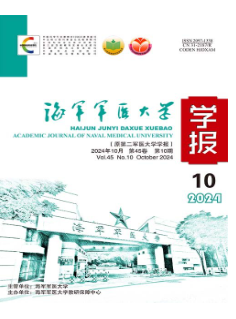唾液基因组DNA快速提取方法及其应用
Q4 Medicine
引用次数: 0
摘要
目的探索一种快速、有效、无创的基因组DNA提取方法。方法比较两种DNA提取方法(新鲜唾液和室温放置一周)提取的基因组DNA,并对提取的DNA中TP53和PRB-3基因进行PCR扩增。招募99名健康儿童和成人,采集其唾液样本,检测KI提取DNA的稳定性。结果两种方法均能从新鲜唾液中提取高质量的基因组dna。KI的DNA得率为(1.91±0.15)μg,其中D260/ D280为1.99±0.05;Kit的DNA得率为(2.64±0.34)μg,其中D260/ D280为1.81±0.02。虽然在室温下放置一周的唾液样本中提取的DNA有明显的降解,但利用这些提取的DNA,通过PCR成功扩增了预期的DNA片段,用于TP53和PRB-3基因。KI法提取99名健康志愿者唾液样本的基因组DNA虽然存在个体差异(DNA产率为[1.89±0.46]μg),但DNA质量稳定可靠(D260/ D280为1.96±0.10)。结论KI法提取唾液基因组DNA成本低、效率高,且无创,适合于大规模流行病学研究。本文章由计算机程序翻译,如有差异,请以英文原文为准。
A method for fast genomic DNA extraction from saliva and its application
Objective To explore a fast,effective and noninvasive method of genomic DNA extraction.Methods We compared the genomic DNAs extracted by two DNA extraction methods of potassium iodide(KI) and Kit from saliva(fresh and placed a week at room temperature),and PCR amplifications were done for TP53 and PRB-3 genes from their extracted DNA.Ninety-nine healthy children and adults were recruited and their saliva samples were collected to detect the stability of DNA extracted by KI.Results High quality genomic DNAs were extracted by both methods from the fresh saliva.The DNA yield based on KI was(1.91 ± 0.15) μg,with the D260/ D280 being 1.99 ± 0.05,and that of Kit was(2.64 ± 0.34) μg,with the D260/ D280 being 1.81 ± 0.02.Although the extracted DNAs had obvious degradation from saliva samples placed for a week at room temperature,the expectant DNA fragments were successfully amplified by PCR for TP53 and PRB-3 genes using these extracted DNAs.Although the genomic DNAs from saliva samples of 99 healthy volunteers by the method of KI showed individual difference(DNA yield was [1.89 ± 0.46] μg),the DNA quality was stable and reliable(D260/ D280 was 1.96 ± 0.10).Conclusion KI method for extracting genomic DNA from saliva is not only cheap and highly effective,but also noninvasive,making it suitable for large-scale epidemiological studies.
求助全文
通过发布文献求助,成功后即可免费获取论文全文。
去求助
来源期刊

海军军医大学学报
Medicine-Medicine (all)
CiteScore
0.50
自引率
0.00%
发文量
14752
期刊介绍:
Founded in 1980, Academic Journal of Second Military Medical University(AJSMMU) is sponsored by Second Military Medical University, a well-known medical university in China. AJSMMU is a peer-reviewed biomedical journal,published in Chinese with English abstracts.The journal aims to showcase outstanding research articles from all areas of biology and medicine,including basic medicine(such as biochemistry, microbiology, molecular biology, genetics, etc.),clinical medicine,public health and epidemiology, military medicine,pharmacology and Traditional Chinese Medicine),to publish significant case report, and to provide both perspectives on personal experiences in medicine and reviews of the current state of biology and medicine.
 求助内容:
求助内容: 应助结果提醒方式:
应助结果提醒方式:


